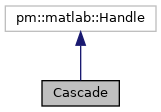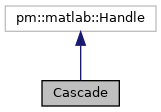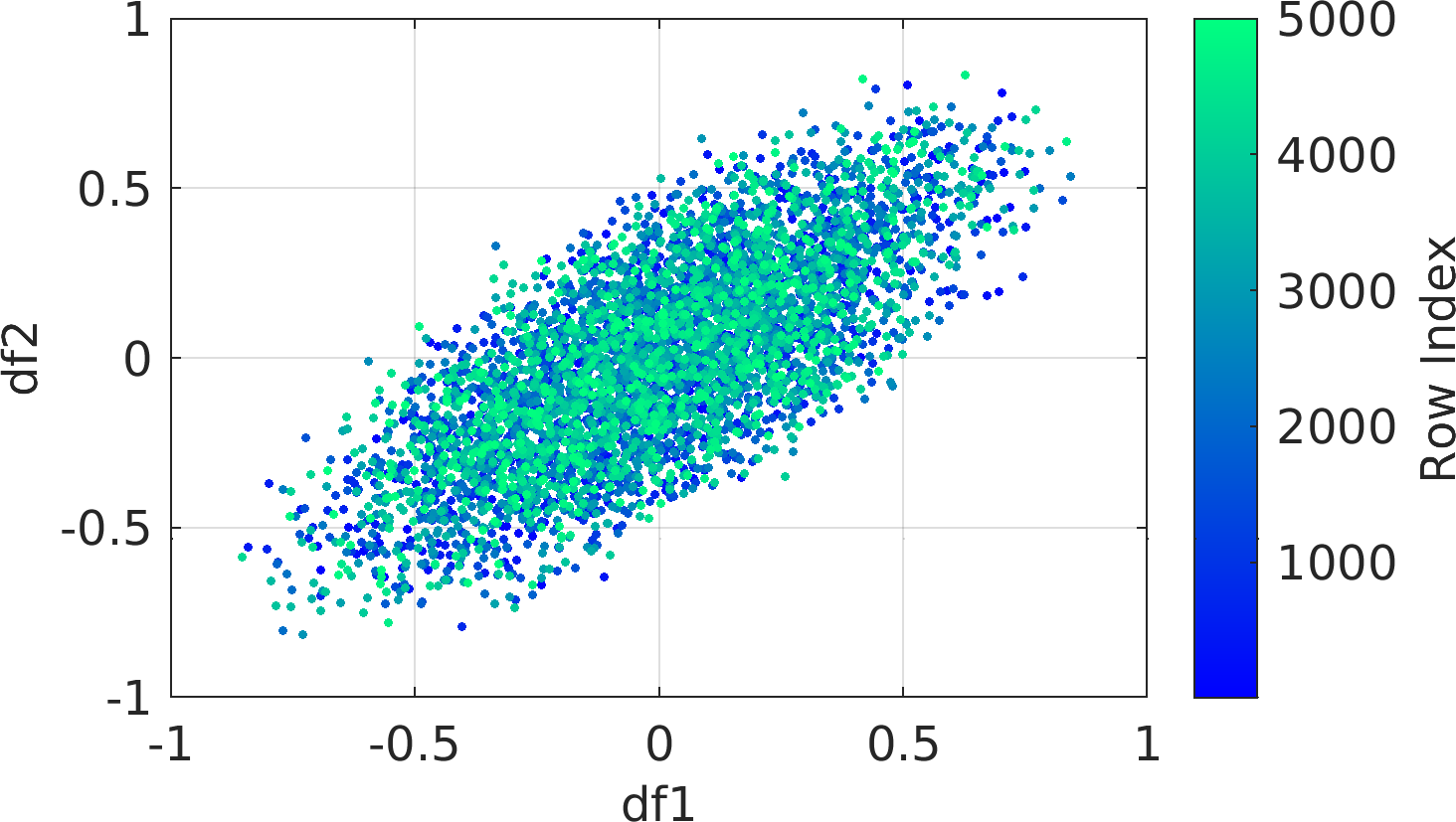
|
ParaMonte MATLAB 3.0.0
Parallel Monte Carlo and Machine Learning Library
See the latest version documentation. |

|
ParaMonte MATLAB 3.0.0
Parallel Monte Carlo and Machine Learning Library
See the latest version documentation. |
This is the abstract class for generating instances of objects that contain the specifications of a cascade of figures (plots).
More...


Public Member Functions | |
| function | Cascade (in template, in varargin) |
| Construct and return an object of class pm.vis.Cascade. More... | |
| function | reset (in self, in varargin) |
| Reset the properties of the cascade of plots to the original default settings. More... | |
| function | make (in self, in varargin) |
| Configure the cascade settings and specifications, make the cascade of plots, and return nothing. More... | |
| function | savefig (in self, in file, in varargin) |
| Export the current cascade of figures to the specified external files. More... | |
| function | premake (in self, in varargin) |
| Configure the cascade of plots settings and specifications and return nothing. More... | |
Data Fields | |
| Property | window |
| Property | template |
This is the abstract class for generating instances of objects that contain the specifications of a cascade of figures (plots).
This is a generic class for generating multiple separate cascading figures each containing a single plot (axes).
Final Remarks ⛓
If you believe this algorithm or its documentation can be improved, we appreciate your contribution and help to edit this page's documentation and source file on GitHub.
For details on the naming abbreviations, see this page.
For details on the naming conventions, see this page.
This software is distributed under the MIT license with additional terms outlined below.
This software is available to the public under a highly permissive license.
Help us justify its continued development and maintenance by acknowledging its benefit to society, distributing it, and contributing to it.
| function Cascade::Cascade | ( | in | template, |
| in | varargin | ||
| ) |
Construct and return an object of class pm.vis.Cascade.
This is the custom constructor of the class pm.vis.Cascade.
| [in] | template | : The input scalar object of superclass pm.vis.Plot. It serves as the template based upon which the cascade of plots are constructed. |
| [in] | varargin | : Any property, value pair of the parent object.If the property is a struct(), then its value must be given as a cell array, with consecutive elements representing the struct property-name, property-value pairs.Note that all of these property-value pairs can be also directly set via the parent object attributes, before calling the pm.vis.Cascade.make() method. |
self : The scalar output object of class pm.vis.Cascade.
Possible calling interfaces ⛓
varargin can also contain the components of the plot component of the parent object.
Example usage ⛓



Final Remarks ⛓
If you believe this algorithm or its documentation can be improved, we appreciate your contribution and help to edit this page's documentation and source file on GitHub.
For details on the naming abbreviations, see this page.
For details on the naming conventions, see this page.
This software is distributed under the MIT license with additional terms outlined below.
This software is available to the public under a highly permissive license.
Help us justify its continued development and maintenance by acknowledging its benefit to society, distributing it, and contributing to it.
| function Cascade::make | ( | in | self, |
| in | varargin | ||
| ) |
Configure the cascade settings and specifications, make the cascade of plots, and return nothing.
In making the figure, this method calls the make() methods of each of the plot objects stored in the window component.
| [in,out] | self | : The input/output parent object of class pm.vis.Cascade which is implicitly passed to this dynamic method (not by the user). |
| [in] | varargin | : Any property, value pair of the parent object.If the property is a struct(), then its value must be given as a cell array, with consecutive elements representing the struct property-name, property-value pairs.Note that all of these property-value pairs can be also directly set via the parent object attributes, before calling the pm.vis.Cascade.make() method. |
Possible calling interfaces ⛓
varargin can also contain the components of the template component of the parent object.
Example usage ⛓



Final Remarks ⛓
If you believe this algorithm or its documentation can be improved, we appreciate your contribution and help to edit this page's documentation and source file on GitHub.
For details on the naming abbreviations, see this page.
For details on the naming conventions, see this page.
This software is distributed under the MIT license with additional terms outlined below.
This software is available to the public under a highly permissive license.
Help us justify its continued development and maintenance by acknowledging its benefit to society, distributing it, and contributing to it.
| function Cascade::premake | ( | in | self, |
| in | varargin | ||
| ) |
Configure the cascade of plots settings and specifications and return nothing.
| [in,out] | self | : The input/output parent object of class pm.vis.Cascade which is implicitly passed to this dynamic method (not by the user). |
| [in] | varargin | : Any property, value pair of the parent object.If the property is a struct(), then its value must be given as a cell array, with consecutive elements representing the struct property-name, property-value pairs.Note that all of these property-value pairs can be also directly set via the parent object attributes, before calling the premake() method. |
Possible calling interfaces ⛓
Example usage ⛓
Final Remarks ⛓
If you believe this algorithm or its documentation can be improved, we appreciate your contribution and help to edit this page's documentation and source file on GitHub.
For details on the naming abbreviations, see this page.
For details on the naming conventions, see this page.
This software is distributed under the MIT license with additional terms outlined below.
This software is available to the public under a highly permissive license.
Help us justify its continued development and maintenance by acknowledging its benefit to society, distributing it, and contributing to it.
| function Cascade::reset | ( | in | self, |
| in | varargin | ||
| ) |
Reset the properties of the cascade of plots to the original default settings.
Use this method when you change many attributes of the plot and you want to clean up and go back to the default settings.
| [in,out] | self | : The input/output parent object of class pm.vis.Cascade which is implicitly passed to this dynamic method (not by the user). |
| [in] | varargin | : Any property, value pair of the parent object.If the property is a struct(), then its value must be given as a cell array, with consecutive elements representing the struct property-name, property-value pairs.Note that all of these property-value pairs can be also directly set via the parent object attributes, before calling the pm.vis.Cascade.make() method. |
varargin can also contain the components of the template component of the parent object.
Possible calling interfaces ⛓
Final Remarks ⛓
If you believe this algorithm or its documentation can be improved, we appreciate your contribution and help to edit this page's documentation and source file on GitHub.
For details on the naming abbreviations, see this page.
For details on the naming conventions, see this page.
This software is distributed under the MIT license with additional terms outlined below.
This software is available to the public under a highly permissive license.
Help us justify its continued development and maintenance by acknowledging its benefit to society, distributing it, and contributing to it.
| function Cascade::savefig | ( | in | self, |
| in | file, | ||
| in | varargin | ||
| ) |
Export the current cascade of figures to the specified external files.
This method is merely a wrapper around all savefig methods of the figure objects in the window component of the parent cascade object.
| [in,out] | self | : The input/output parent object of class pm.vis.Cascade which is implicitly passed to this dynamic method (not by the user). |
| [in] | file | : The input vector of MATLAB strings or cell array of char vectors containing the paths to the external output figure files. It must be of the same length as the window component of the parent object.For more information, see the corresponding argument file of the savefig method of class pm.vis.figure.Figure.(optional. If file or any elements of it is missing or empty, the default will be set by the savefig method of the corresponding cascade figure in the window component.) |
| [in] | varargin | : Any optional key-val pair that is accepted by the savefig method of class pm.vis.figure.Figure.For more information, see the savefig method of class pm.vis.figure.Figure. |
Possible calling interfaces ⛓
Example usage ⛓



Final Remarks ⛓
If you believe this algorithm or its documentation can be improved, we appreciate your contribution and help to edit this page's documentation and source file on GitHub.
For details on the naming abbreviations, see this page.
For details on the naming conventions, see this page.
This software is distributed under the MIT license with additional terms outlined below.
This software is available to the public under a highly permissive license.
Help us justify its continued development and maintenance by acknowledging its benefit to society, distributing it, and contributing to it.
| Property Cascade::template |
template
The scalar object of superclass pm.vis.Plot representing the template of the cascade of plots to display.
| Property Cascade::window |
window
The cell array of scalar objects of superclass pm.vis.Plot representing the cascade of plots to display.